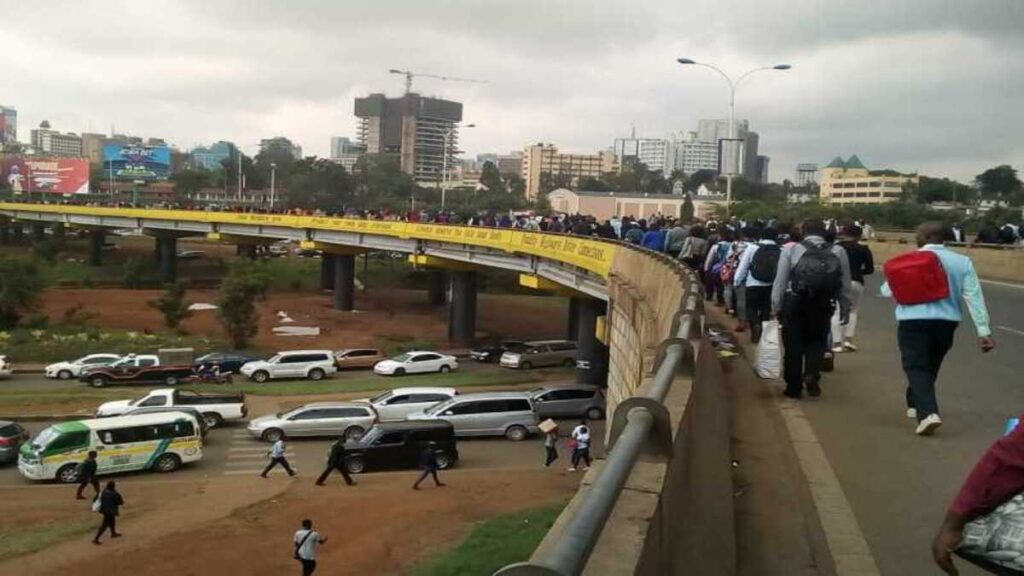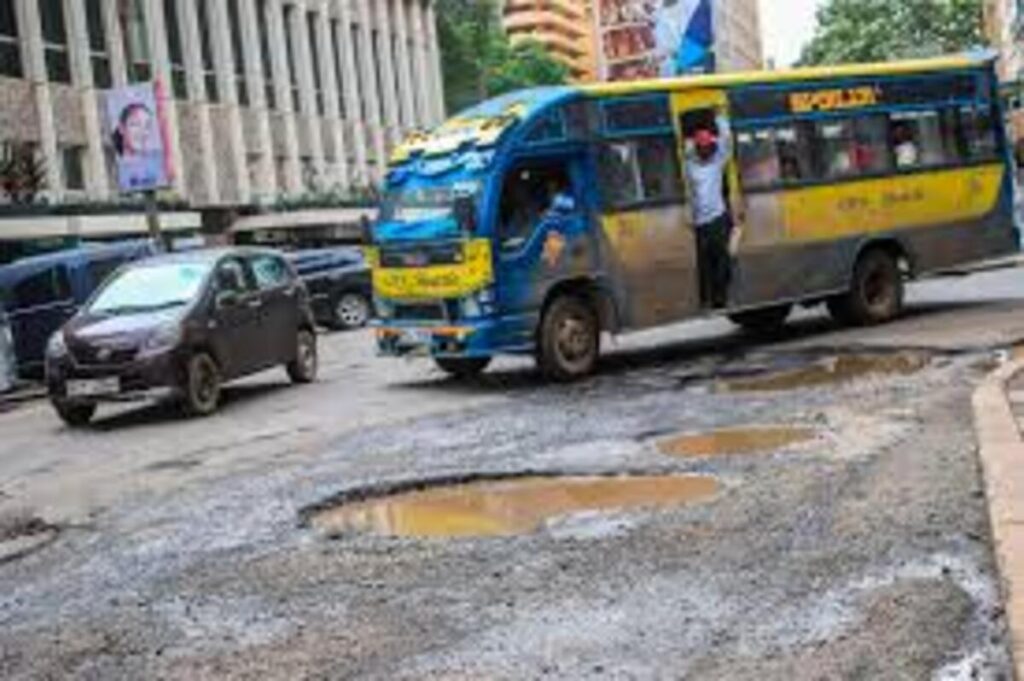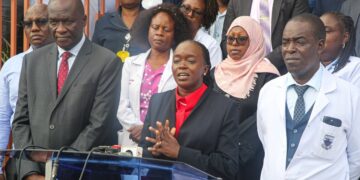Nairobi’s transport network faces severe deterioration, leaving residents frustrated with daily commuting challenges. Poor infrastructure and chronic congestion have become defining features of the city’s transport system.

A recent linkage road within Nairobi city showing the state of transport; Photo Courtesy
A significant 47% of Nairobi’s population must walk long distances to their destinations. This high percentage reflects the inaccessibility of public transport options for many residents.

Commuters trek to Nairobi CBD along Waiyaki Way, after being dropped at new designated bus termini. [Photos: Courtesy].
The matatu system, while being the primary form of public transport, presents numerous challenges. Overcrowding and high fares force many residents to seek alternative transportation methods.

A recent linkage road within Nairobi city showing the state of transport; Photo Courtesy
Poor road maintenance has left many streets filled with dangerous potholes. These road conditions significantly impact travel times and safety for all commuters.
Vulnerable passengers, including elderly citizens and persons with disabilities, face particular hardships. The current infrastructure fails to accommodate their needs effectively.

The Nairobi Metropolitan Area Transport Authority has proposed potential solutions. A key initiative includes plans for a Bus Rapid Transit (BRT) system.
However, despite these proposals, the city’s transport issues remain pressing. Daily commutes continue to affect residents’ quality of life significantly.
The crisis particularly impacts low-income residents. Many cannot afford regular matatu fares, limiting their mobility within the city.
Infrastructure problems extend beyond just road conditions. The lack of adequate public transport services creates additional barriers for residents.
The economic impact of these transport issues affects the entire city. Businesses face challenges due to delayed deliveries and staff transportation difficulties.
Urban planners emphasize the need for comprehensive solutions. The current situation requires both immediate actions and long-term planning.
The transport crisis highlights broader urban development challenges in Nairobi. Poor infrastructure maintenance and inadequate public transport options continue to affect daily life.
City authorities acknowledge the need for improvement. However, implementing effective solutions remains a significant challenge.
The situation demonstrates the urgent need for systematic change. Both infrastructure improvements and public transport management require immediate attention.
As Nairobi continues to grow, addressing these transport challenges becomes increasingly critical. The success of future improvements will depend on effective implementation strategies.



















